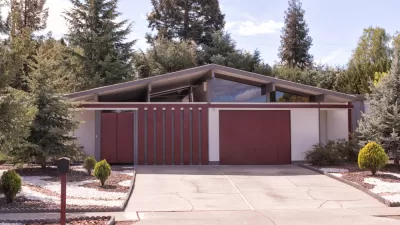A Wall Street Journal trend piece argues that a shift toward luxury apartments in cities across the United States is driving up the cost of rent throughout the market.

Laura Kusisto notes that developers are building more luxury multi-family units than any other multi-family residential typology:
"Of 370,000 multifamily rental units completed from 2012 to 2014 in 54 U.S. metropolitan areas, 82% were in the luxury category, according to CoStar Group Inc., a real-estate research firm. The firm defines luxury buildings as those that command rents in the top 20% of the market. In some places, including Denver, Tampa, Baltimore and Phoenix, virtually all new apartment construction has been targeted to high-end renters. In Atlanta, about 95% of new apartments have been in the luxury category."
According to the article, in the past such building booms at the upper end of the market would have alleviated demand for older buildings, and by extension, lowering the cost of the middle of the market. According to Kusisto, "[that] pattern isn’t occurring in the current cycle, say economists, due in part to a supply shortage."
As that sentence implies, the article mixes rhetoric with its reporting. By the conclusion of the article, Kusisto explicitly recommends a supply-side action to mitigate the trend of rising rents:
"Cities should also look at loosening many of the zoning and other regulatory restrictions that make development so costly and lengthy and have kept rates of new rental construction low in many places, experts said. Allowing developers to build smaller, micro-units, can also help keep rents more affordable to young professionals."
FULL STORY: New Luxury Rental Projects Add to Rent Squeeze

Study: Maui’s Plan to Convert Vacation Rentals to Long-Term Housing Could Cause Nearly $1 Billion Economic Loss
The plan would reduce visitor accommodation by 25,% resulting in 1,900 jobs lost.

Alabama: Trump Terminates Settlements for Black Communities Harmed By Raw Sewage
Trump deemed the landmark civil rights agreement “illegal DEI and environmental justice policy.”

North Texas Transit Leaders Tout Benefits of TOD for Growing Region
At a summit focused on transit-oriented development, policymakers discussed how North Texas’ expanded light rail system can serve as a tool for economic growth.

Paris Bike Boom Leads to Steep Drop in Air Pollution
The French city’s air quality has improved dramatically in the past 20 years, coinciding with a growth in cycling.

Why Housing Costs More to Build in California Than in Texas
Hard costs like labor and materials combined with ‘soft’ costs such as permitting make building in the San Francisco Bay Area almost three times as costly as in Texas cities.

San Diego County Sees a Rise in Urban Coyotes
San Diego County experiences a rise in urban coyotes, as sightings become prevalent throughout its urban neighbourhoods and surrounding areas.
Urban Design for Planners 1: Software Tools
This six-course series explores essential urban design concepts using open source software and equips planners with the tools they need to participate fully in the urban design process.
Planning for Universal Design
Learn the tools for implementing Universal Design in planning regulations.
Smith Gee Studio
Alamo Area Metropolitan Planning Organization
City of Santa Clarita
Institute for Housing and Urban Development Studies (IHS)
City of Grandview
Harvard GSD Executive Education
Toledo-Lucas County Plan Commissions
Salt Lake City
NYU Wagner Graduate School of Public Service





























